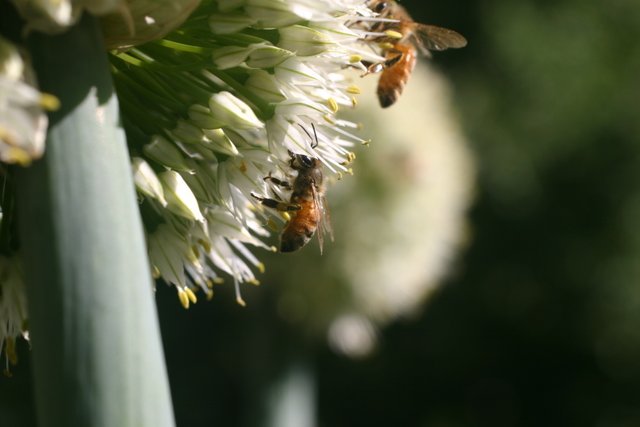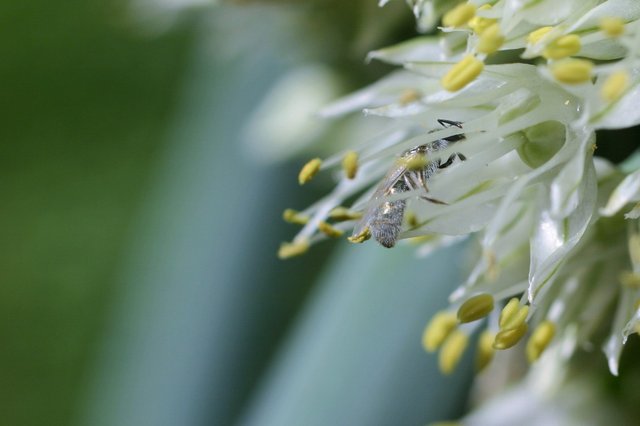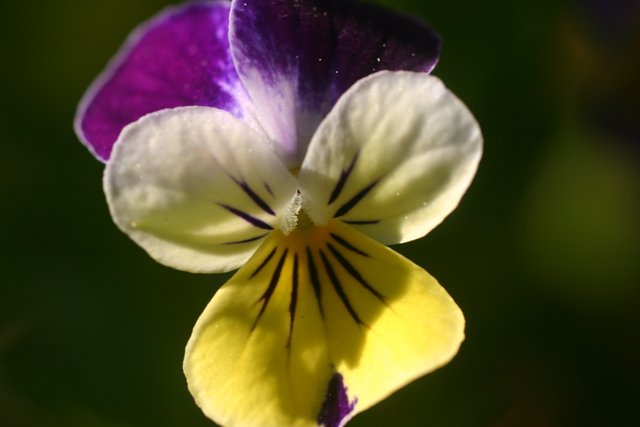Springtime Macro Photos
Nothing stimulates the senses like Spring. When the flowers start blooming and the insects start buzzing, I can't wait to get my hands on a camera. There is something about the blooms and flurry of activity that thrusts me out of the winter slump. When they say a picture says a thousand words, they aren't kidding. Here are some photos I took in my garden last spring, and the things I know about them.

I found these honeybees searching for nectar among the blossoming onion flowers. They use their antennae, vision, and olfactory senses to determine which flowers have not been visited. Interesting, the bees are able to sense the electric field surrounding the flower. As a bee takes nectar from the flower, the field changes. Other bees can sense that the flower is empty when they come to gather nectar. This keeps the bees incredibly efficient. Not only are they smart enough to maximize their efficiency, they are able to communicate the exact location of new stores of food through a series "dances". These dances include vibrations and tail-waggles, but can convey information about the distance and direction of a source of food, as well as information about obstacles in the way. Bees are truly remarkable!

But bees aren't the only ones looking for the nutritious nectar. Many other insects are also pollinators. This fly, much smaller than the bee, is exploring the same onion flowers. The fly is only about the size of the bee's head. This allows the fly to occupy a slightly different niche than the bee. This fly is able to get deeper within the flower, and can even access smaller flowers. Honeybees have a harder time accessing small flowers. This is a good example of why all pollinators are important for biodiversity.

This is a common Johnny Jump Up flower, otherwise known as the pansy or more specifically, Viola tricolor. It is endemic to Europe, but introduced to North America. You've probably seen one in a neighbor's garden. It has been referenced throughout history, back to Roman mythology. Interestingly, chemicals produced within these flowers have been found to have anti-bacterial effects, anti-inflammatory effects, and a host of other healthful effects. Compounds derived from this simple plant are often used in pharmaceutical applications. Even the smallest organisms can make big contributions to human science. So here's to pollinators, spring, and most of all, the end of winter!
--Gabe
World of Photography
>Visit the website<
You have earned 6.50 XP for sharing your photo!
Daily photos: 2/2
Daily comments: 0/5
Multiplier: 1.30
Block time: 2018-05-03T13:18:54
Total XP: 13.00/100.00
Total Photos: 2
Total comments: 0
Total contest wins: 0
Follow: @photocontests
Join the Discord channel: click!
Play and win SBD: @fairlotto
Daily Steem Statistics: @dailysteemreport
Learn how to program Steem-Python applications: @steempytutorials
Developed and sponsored by: @juliank